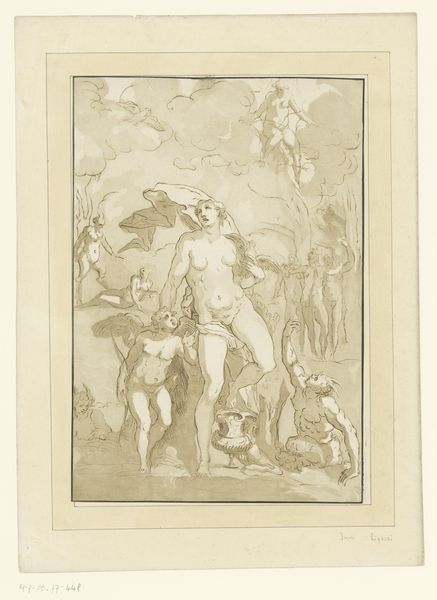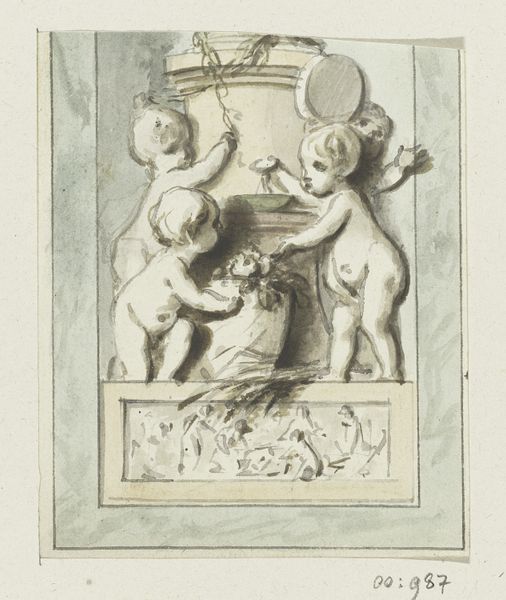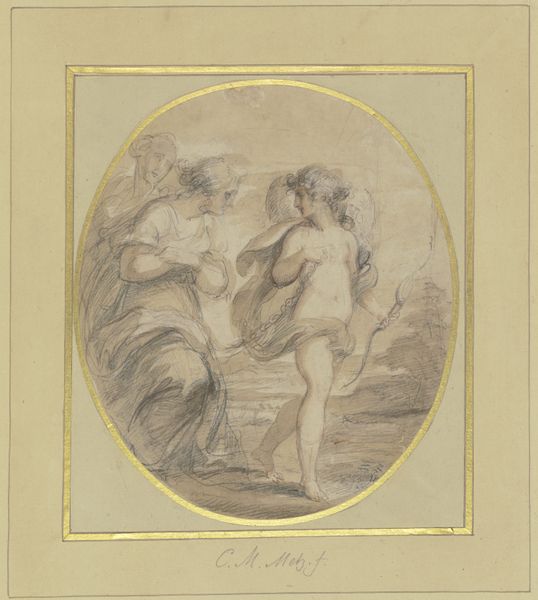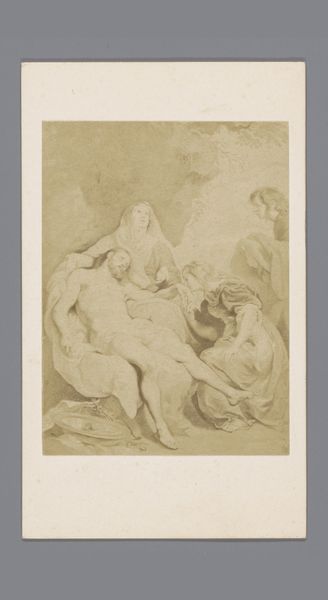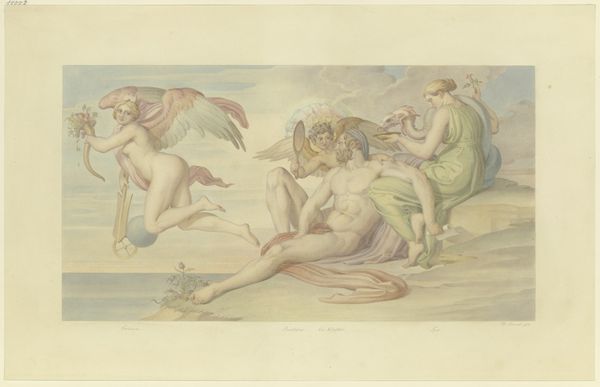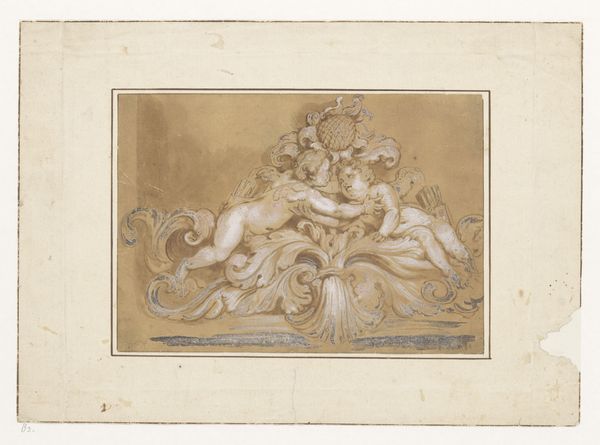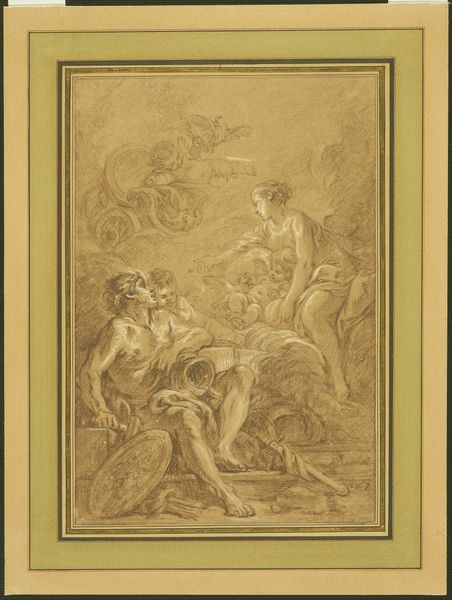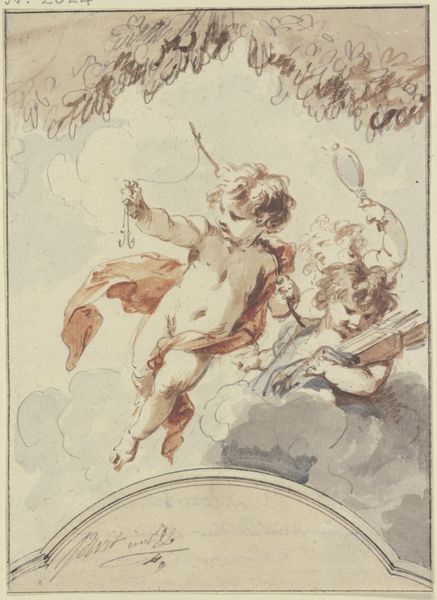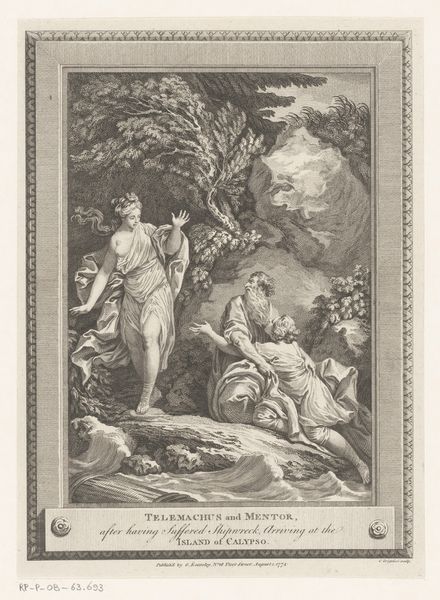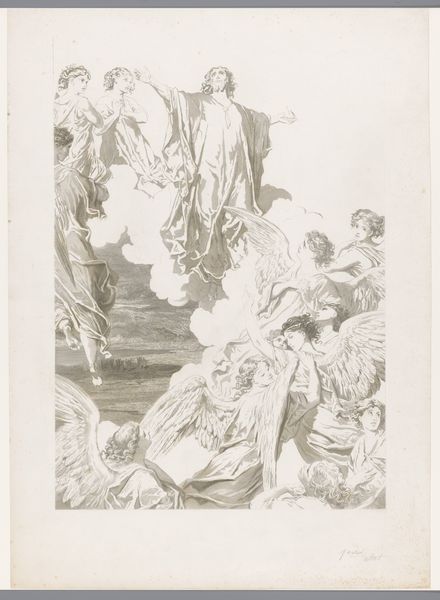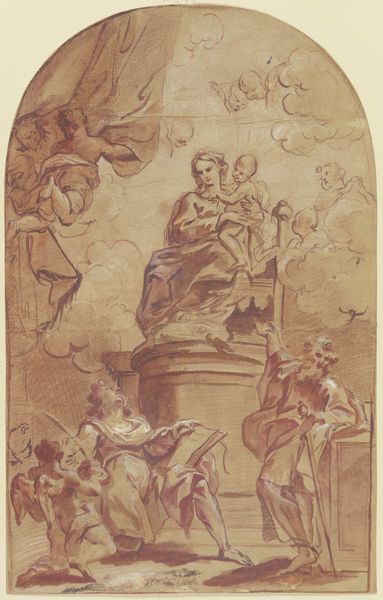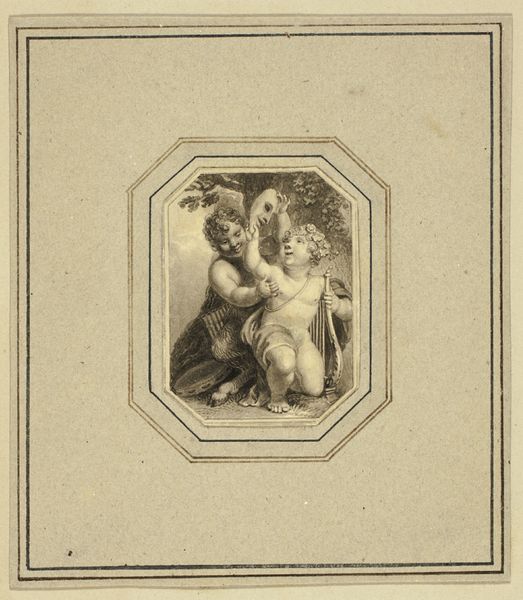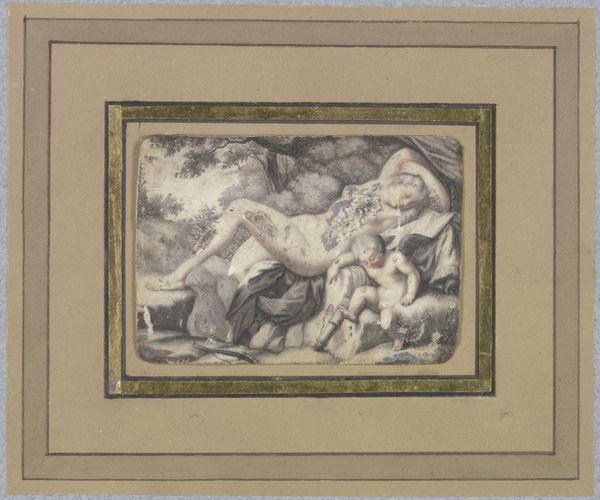
drawing, watercolor
#
drawing
#
allegory
#
baroque
#
figuration
#
watercolor
#
watercolour illustration
#
history-painting
#
watercolor
Dimensions: height 309 mm, width 149 mm
Copyright: Rijks Museum: Open Domain
Curator: At first glance, it's a swirling scene, full of pastel shades, movement, and mythological figures rising out of what appears to be a sculptural base. Editor: Indeed. What we’re looking at is "Ontwerp voor een behangselschildering met Coronis en Minerva," or "Design for a wallpaper painting with Coronis and Minerva" by Rienk Keyert, created around 1751. It's currently housed at the Rijksmuseum. It is executed in watercolor. Curator: The watery application suits the subject. Observe how Keyert orchestrates a hierarchy of figures. Minerva, armored and with a shield, presides over Neptune who gestures urgently below, the scene underpinned by that architectural, trompe-l'oeil element. Editor: The materiality speaks of a society embracing refinement and luxury. Watercolor lends itself to delicate execution but consider the economic context: commissioning decorative pieces like this signaled wealth and status, and reflected specialized artisanal labor and the trade of pigments and paper. Curator: Consider the interplay of gesture and gaze. Neptune’s supplication, Minerva's impassive countenance; it all reads as high drama. Keyert employs a classical vocabulary, drawing heavily from Baroque aesthetics to enhance the scene's emotive force. It’s an allegory, presented for perhaps a formal dining room. Editor: Allegory was a language understood by the elites. But to focus on the materiality further, the pigment itself holds stories, revealing trade routes, the accessibility of materials, and labor practices of the time. Watercolors demanded meticulous technique. We need to acknowledge the unseen hands that contributed to this visual spectacle. Curator: Your emphasis reframes our reading of the work, certainly. This artwork's significance lies also in how it reflects the intellectual climate of the time. The renewed interest in classical themes offered fertile ground for these designs. It's about a balance between form, allegory, and the hand of the artist shaping these grand narratives. Editor: Ultimately, examining its genesis provides a more grounded appreciation for both the aesthetic intention and its wider cultural implications.
Comments
No comments
Be the first to comment and join the conversation on the ultimate creative platform.
